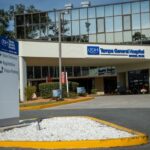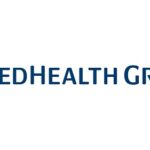 Healthcare delivery in the United States is on the path to transformation through information. In our new world, we have access to data that can be used to make decisions that improve the quality of the care we deliver, address the health of our society from a population health perspective, reduce medical errors; and integral to all is to analyze and drive waste and overuse out of the system. This exciting time brings with it the promise of transformation at the very heart of healthcare delivery.
Healthcare delivery in the United States is on the path to transformation through information. In our new world, we have access to data that can be used to make decisions that improve the quality of the care we deliver, address the health of our society from a population health perspective, reduce medical errors; and integral to all is to analyze and drive waste and overuse out of the system. This exciting time brings with it the promise of transformation at the very heart of healthcare delivery.Transformation is exciting, and our healthcare system has had a number of break-throughs; however the system has a critical weak link at the core of its infrastructure. We need information – clinical information that is centered on the patient – and we need to be able to analyze, understand, share and use that information wherever the patient enters the system and follow the patient wherever they go.
One area where the portability of personal health records could be improved upon is what is currently happening with medical CDs. Burning CDs for patients offers advantages such as easy transfer, greater storage capacity and lower cost. Although viewing a CD seems like a simple matter, multiply that CD by hundreds or thousands of patients and the challenge becomes daunting. Fundamentally, a facility has to determine whether it has the resources and technological capability to even accept patient CDs.
Understanding this situation and seeking improvements, the National Institute of Biomedical Imaging and Bioengineering (NIBIB) launched a project in 2009 to design an Internet-based network for patient-controlled sharing of medical images. They awarded the Radiological Society of North America (RSNA) a $4.7 million contract to execute the project. The goal would be to create a network to facilitate access to imaging exams for patients and physicians, potentially reducing unnecessary examinations, minimizing patient radiation exposure and enabling better informed medical decisions. The focus would be to move closer to a universal electronic health record (EHR) and help physicians meet federal meaningful use requirements in practice. This past November during the RSNA’s annual meeting medical image sharing firm itMD has been selected to provide its patient health record (PHR) system for the RSNA Image Share project.
itMD is a software company focused on cloud computing in order to eliminate the inefficiencies surrounding the transfer of medical imaging. By limiting the use of outdated media and improving data sharing practices, the itMD social platform empowers patients and physicians by providing instant access to imaging records. The company aims to become the standard communications provider for the interaction between patients, physicians, and institutions, as well as the transaction platform for their relationships.
itMD’s emphasis has been in a technology which enables patients, especially the newly diagnosed, through their challenge to make the necessary decisions to initiate the best plan for their care. The challenges with moving imaging studies from and to multiple locations is a situation that must be improved.
Using cloud computing, the goal of itMD is to enable the secure and on-demand exchange of medical imaging information from anywhere to anyone. Their mission is to deliver the most available and relevant information to make the most correct diagnosis. Collecting copies of imaging records should be a thing of the past, leaving patients free to spend every minute with their doctor and medical team developing the best course of action for their care, not waiting for CDs to arrive and then shepherding them between different doctors.
Patients should expect seamless network delivery of their medical images, in full diagnostic quality, delivered to any doctor or imaging intensivists who may need them. Further, patients should be able to see their medical imaging data and reports, share them with their primary care or other referring physician, in a way that makes the primary report understandable, relevant and informative.
Ultimately, increased access to one’s own health record is coming closer on the horizon and itMD is driving this initiative through their image sharing solution.



























